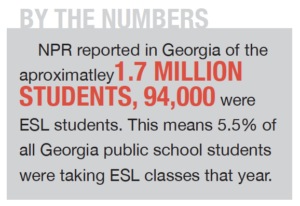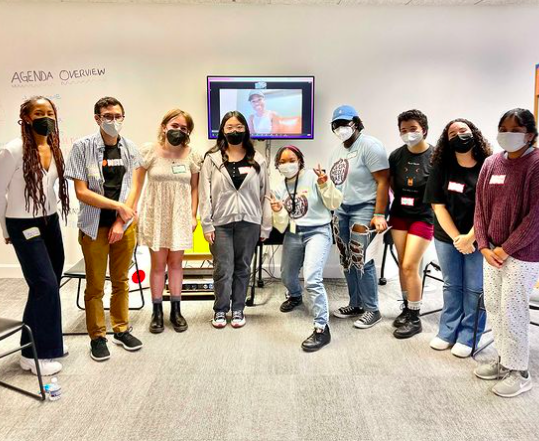At Lakeside High School, there are a group of students that you may not see in your English classes, or maybe they are given extra time on writing assignments or other supports. Throughout the United States, there are students who do not come from a native English-speaking background. Most of them are U.S. citizens. They may be the child of immigrants, or they may be immigrants themselves. Either way, when it comes time for these students to enter in the public school system, they are faced with the challenges of integrating into an English-language school system. That is where ESL programs come into play.

ESL programs or ELL/ESOL programs in U.S. public schools are designed to help students whose native language is not English to learn the language. When students are first admitted to a public school, they take an English proficiency test (in Georgia this is called a “home language survey” to understand the student’s need).
Those who qualify are placed in ESL programs — about 4.9 million students (almost 10% of all U.S. public school students) in 2016, according to the U.S. Department of Education, National Center for Education Statistics — as a supplement to their schooling and are pulled out from regular English classes. Once a certain level of proficiency is reached the students continue to take ESL monitoring, meaning they take the regular curriculum with their teachers keeping an eye out for any extra English language needs. According to some statistics and ESL students, the actual benefit of ESL programs in the U.S. is debatable.
The U.S. Department of Education (reported by NPR in 2017) shows that only 43.9% of ESL students graduate high school, while non-ESL students graduate at a rate of 72.9%. And of those students who do graduate high school, only 1.4% take the SAT or ACT.
 ESL students are less likely to benefit from “gifted” programs due to their lack of English proficiency: Only 3% of ESL students in Georgia are enrolled, while non- ESL students have a 14% enrollment rate. While it is understandable that fewer ESL students may qualify for a gifted program, the lack of such opportunities puts students at a fundamental disadvantage.
ESL students are less likely to benefit from “gifted” programs due to their lack of English proficiency: Only 3% of ESL students in Georgia are enrolled, while non- ESL students have a 14% enrollment rate. While it is understandable that fewer ESL students may qualify for a gifted program, the lack of such opportunities puts students at a fundamental disadvantage.
On the other hand, some of Lakeside High School’s ESL students said the program has good benefits: “Your language improves very much in ESOL and general classes – learn something in ESOL and then improve your vocab in general classes – the combination is good.” There is often a general sense of community between ESL students as they are going through their English language journeys together and not alone.
This sentiment is backed up in the book “Kids Come in All Languages: Reading Instructions for ESL Students,” where Karen Spangenberg-Urbschat and Robert Pritchard say that during the social process ESL students are encouraged to practice the target language in a social setting where they interact with native English speakers. The social atmosphere makes the learning process more relaxed than if it occurred in a classroom; there is not much pressure to be good at the target language.

VOX ATL took some of the statistics about ESL students’ achievement to the Clarkston Community Center, a nonprofit organization that serves both long-term residents and families and individuals who were not born in the U.S., to see what students from multilingual backgrounds thought of them. One of the students responded: “This is unfair, everyone should be able to graduate even if they have trouble with English.” While none of these students were ESL students, they come from families where English is not the first language. Students told us that “sometimes it’s hard to get help from your parents, unlike the other kids.” And “maybe your parents don’t know how to sign the paperwork.”
Another goal of ESL programs is to help students and parents as well. The website for DeKalb Public Schools, Lakeside High School’s county, says their English Learners Studies Program is to “Provide services to assist international parents and students with language differences so that students become proficient in academic content and achieve high standards” and to “Promote parental and community participation in language acquisition activities.”
ESL programs are not meant to be an alternate track that disadvantages students, rather a support during a temporary setback, ideally. Whether this is really the case is up to the student and the school’s ability to aid students in their English learning paths.




